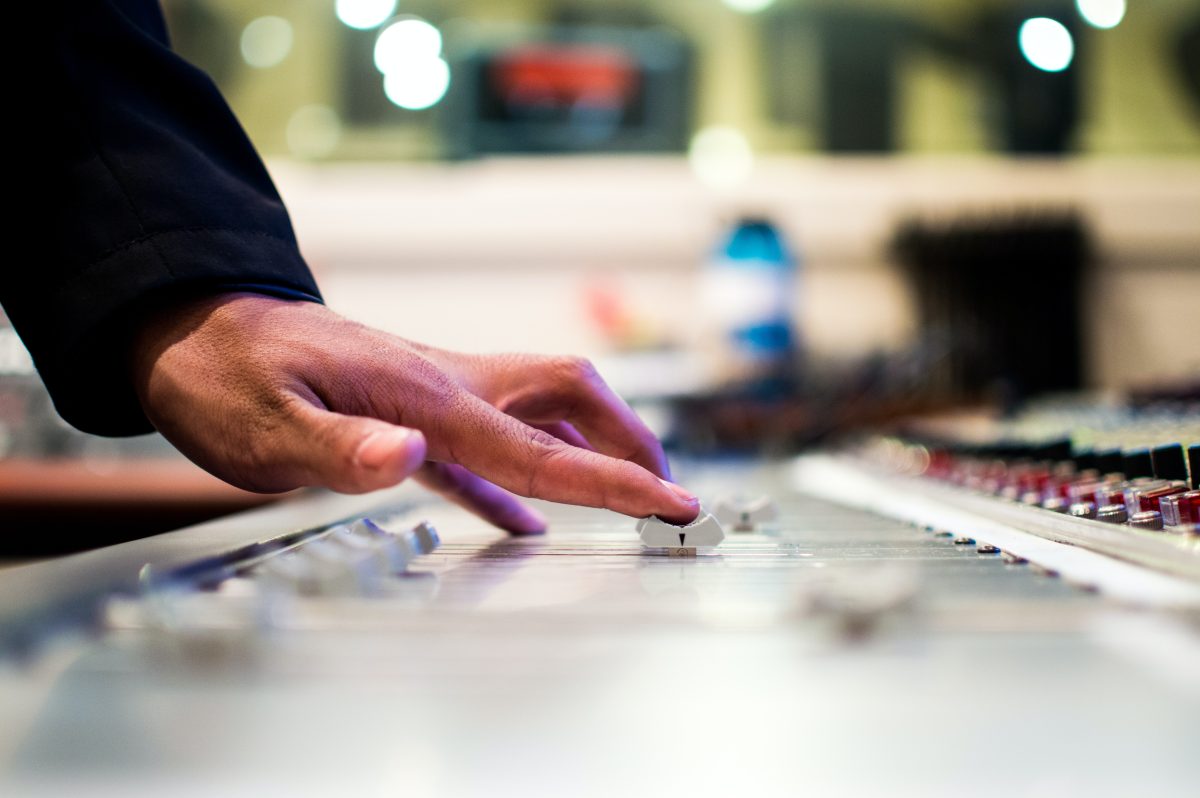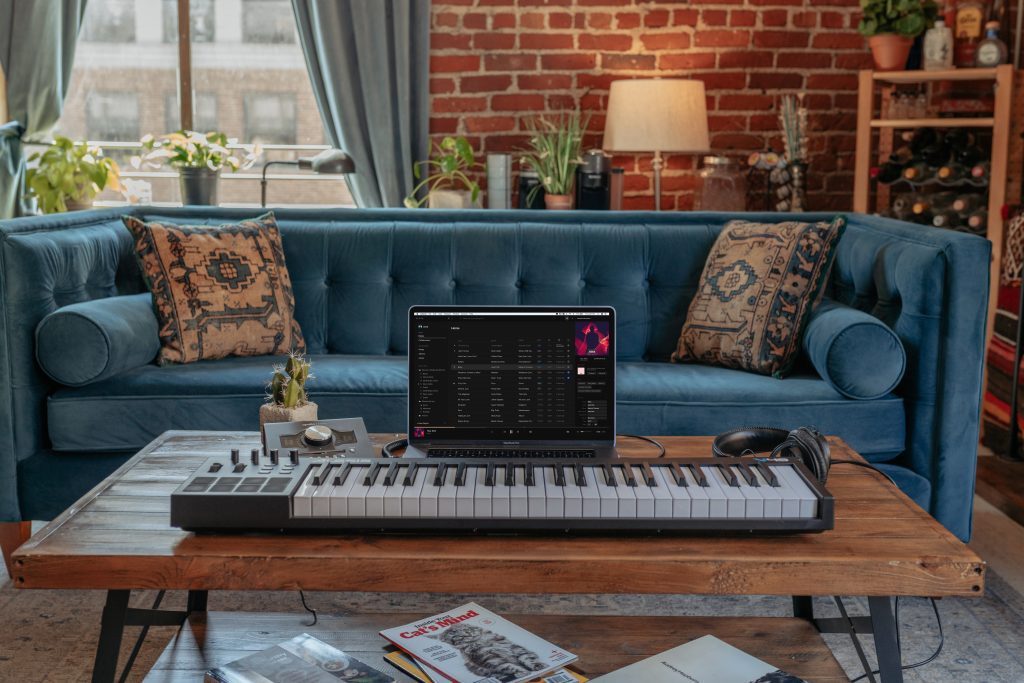Have you ever wondered why some songs race your heart while others lull you into a peaceful state? In music production, the volume holds the key to this fascinating phenomenon. It’s the driving force shaping the emotions our favorite tunes evoke. Today, we embark on a sonic journey to unravel the mysteries behind volume—the power that can turn a whisper into a roar and a roar into a symphony. Get ready to explore the depths of sound as we delve into the essence of volume and unlock its secrets.
What is volume? Volume, in the realm of music production, refers to the intensity or strength of sound, the force that gives life to melodies and shapes the emotional impact of a composition.
What are the two basic qualities of sound?
Pitch and volume are the dynamic duos that give the music its incredible range of expression.

- Pitch refers to the highness or lowness of a sound, and it’s closely tied to the frequency of vibrations. It’s like the DNA of a sound, determining its identity.
- The volume deals with the strength and intensity of the sound, whether it’s a gentle whisper or a roaring thunderstorm. It’s what makes you feel the beat in your bones or get lost in the delicate melodies.
Pitch and volume are the dynamic duo that
gives music its incredible range of expression.
One way to vary the volume is by hitting the tuning fork harder. Like a powerful punch can take you on a serious punch, volume giving that tuning fork a solid whack can make it scream with intensity. But that’s not all! To amplify the sound, you can touch the fork on different surfaces, like a table or a resonance box. It’s like giving your music a stage to perform on, enhancing its presence and making it stand out from the crowd.
AKAI Professional MPK Mini MK3

AKAI Professional MPK Mini MK3
How can we manipulate volume with tuning forks?
Now that we’ve got a handle on the basics of volume, it’s time to dive deeper into the fascinating world of manipulating volume with our trusty tuning forks. Buckle up as we explore the techniques that will unleash your control over volume in music production!
Hitting harder for louder sounds
Imagine you’re in a fierce battle with the volume knob. You want to crank up the intensity of your music, but how? One surefire way to increase the volume with your tuning fork is by hitting it harder. Just like Thor summoning his mighty hammer, give that tuning fork a good whack, and watch as the sound explodes with newfound power. It’s like unleashing a sonic thunderstorm that will h listeners on the edge of their seats.

Resonance for amplified sound
Ah, resonance, the magical force that can transform a gentle hum into a soaring symphony. Picture this: you place your tuning fork on a table or a resonance box—think of it as a stage for your sound. As the vibrations travel through the table or box, they encounter a sympathetic resonance, amplifying the sound and adding a touch of enchantment to your music. It’s like giving your music its own personal cheerleading squad, cheering it on, and elevating it to new heights.
Damping for a softer touch
Enter the art of damping the vibrations. By gently touching the vibrating tuning fork with your hands or using soft clothes, you can calm those wild vibrations and create a more delicate and soothing sound. It’s like putting a cozy blanket over your music, creating a warm and intimate atmosphere that will make your listeners feel right at home.
Before we move forward, let’s quickly go over a small table of dos and don’ts to keep in mind when manipulating volume with tuning forks:
| Dos | Don’ts |
|---|---|
| Experiment with hitting the fork harder for increased volume | Don’t hit the fork with excessive force that may damage it |
| Try placing the tuning fork on a resonant surface for amplified sound | Avoid placing the fork on unstable or fragile objects |
| Use damping techniques to decrease volume gently | Don’t abruptly stop the vibrations or forcefully mute the sound |
What are the different sound properties?
It’s time to delve into the captivating realm of sound properties. So, my fellow music enthusiasts, let’s put on our sonic detective hats and unravel the secrets behind the elements that make sound such a mesmerizing force.
Frequency and pitch
Frequency is the heartbeat of sound! Imagine sound as a group of friends jamming together in a band. Well, frequency determines how fast those friends are playing their instruments. It refers to the number of vibrations per second, measured in Hertz (Hz). Just like a tuning fork vibrating at a specific frequency produces a distinct pitch, different frequencies give birth to different musical notes.
Whether you’re rocking out to a high-pitched electric guitar riff or getting lost in the deep rumble of a bass drum, frequency plays a significant role in defining the pitch of the sound.
Strength and volume
Now, let’s turn our attention to the powerhouse of sound—strength or intensity. Picture yourself at a concert, surrounded by screaming fans and the sheer energy radiating from the stage. That raw energy is what we call volume. It’s the loudness or softness of a sound dictated by its strength. Think of it like the volume knob on your speakers.
Crank it up, and your music fills the room with an explosive wave of sound. Turn it down, and the music becomes a gentle whisper. So, whether you’re aiming for an adrenaline-pumping anthem or a tranquil lullaby, the volume gives you the power to mold the emotional impact of your music.
Here’s a data table that sheds light on the relationship between frequency and pitch, as well as volume and intensity in the context of music production.
| Sound Property | Description |
|---|---|
| Frequency | Refers to the number of vibrations per second |
| Pitch | Determines the highness or lowness of a sound |
| Volume | Relates to the strength or intensity of sound |
| Intensity | Dictates the loudness or softness of a sound |
If you want even more great tips and information, check out the video below.
Frequently Asked Questions (FAQ)
Got some burning questions about volume in music production? Don’t worry; we’ve got you covered! Check out these frequently asked questions to find the answers you seek.
How does the volume affect the emotional impact of music?
Volume plays a significant role in shaping the emotional impact of music. By manipulating volume, you can create contrasting dynamics that evoke different feelings in the listener. Soft, gentle passages can convey intimacy or introspection, while powerful, loud sections can elicit excitement or a sense of grandeur.
Understanding how to control volume allows you to craft a musical journey that captivates and moves your audience.
Can volume manipulation enhance the clarity of a mix?
Absolutely! Volume control is crucial for achieving a balanced and clear mix. By skillfully adjusting the volume of individual elements within a composition, you can ensure that each instrument or sound occupies its rightful space in the sonic spectrum.
This allows for better separation and clarity, enabling the listener to distinguish and appreciate each component of your music.
Are there any risks involved in excessive volume amplification?
Indeed, excessive volume amplification can lead to audio distortion, clipping, and loss of quality. It’s essential to monitor your levels and ensure that you’re not pushing the volume to the point where the sound becomes distorted or harsh.
Keeping an eye (or rather, an ear) on the meters and using appropriate gain staging techniques will help you maintain the integrity of your audio while achieving the desired impact.
Conclusion
We’ve explored the captivating world of volume in music production, from its fundamental properties to the art of manipulation. Hopefully, this journey has helped you unlock the secrets behind creating powerful and emotive soundscapes. Remember, when it comes to volume, it’s all about finding the right balance because too much or too little can be a real “treble”! So, go forth, experiment, and let your music speak volumes!
Did I cover everything you wanted to know? Let me know in the comments section below (I read and reply to every comment). If you found this article helpful, share it with a friend, and check out my full blog for more tips and tricks on music production. Thanks for reading, and keep creating incredible sounds that resonate with the world!
Key Takeaways
This article covered the fascinating realm of volume in music production. Here are some key takeaways:
- Volume is the intensity or strength of sound, and it plays a crucial role in shaping the emotional impact of music.
- Frequency determines the pitch of a sound, while volume relates to its intensity.
- Techniques such as hitting harder, using resonance, or damping vibrations can manipulate volume with tuning forks.
- Understanding sound properties like pitch and volume helps create expressive and balanced mixes.
- Proper monitoring is essential to avoid audio distortion and maintain audio quality.















